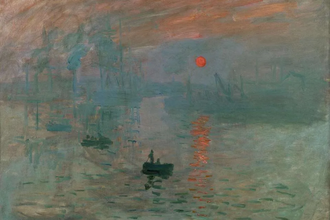Gospel in Art: "The old is good" he says

A Restorer in His Workshop Full of Instruments, by Claude Firmin © Museum Carvet, Avignon, France
Source: Christian Art
Gospel of 6 September 2024
Luke 5:33-39
The Pharisees and the scribes said to Jesus, 'John's disciples are always fasting and saying prayers, and the disciples of the Pharisees too, but yours go on eating and drinking.' Jesus replied, 'Surely you cannot make the bridegroom's attendants fast while the bridegroom is still with them? But the time will come, the time for the bridegroom to be taken away from them; that will be the time when they will fast.'
He also told them this parable, 'No one tears a piece from a new cloak to put it on an old cloak; if he does, not only will he have torn the new one, but the piece taken from the new will not match the old.
'And nobody puts new wine into old skins; if he does, the new wine will burst the skins and then run out, and the skins will be lost. No; new wine must be put into fresh skins. And nobody who has been drinking old wine wants new. "The old is good" he says.'
Reflection on the painting
At the end of today's gospel reading, Jesus makes an insightful and somewhat humorous observation about human nature: 'No one after drinking old wine wants new, for they say, "The old is better"'. In Jesus' time, tradition held great importance. What was ancient was revered, and what had stood the test of time was respected. The new, especially in the realm of religion, was often viewed with suspicion. In contrast, we now live in a culture where 'new is better' is a common sentiment, with innovation often valued over tradition. In today's gospel, Jesus describes his ministry as 'new wine' that old wineskins cannot contain. Yet, he did not reject his religious heritage. He was deeply rooted in his Jewish tradition, valuing its best aspects while seeking to bring it to fulfilment.
In matters of faith, we must be grounded in tradition. As followers of Jesus, our roots lie in the Christian tradition, which itself is anchored in the Jewish tradition. At the same time, we need to remain open to the new ways the Lord is working among us, the new paths he is leading us to take. Saint Augustine once described God as 'Beauty, ever ancient, ever new'.
Respecting the old and bringing it to the new is in a way what art restoration does. Art restoration involves a delicate balance between respecting the original work and revitalising it for contemporary appreciation. This process honours the integrity and historical significance of the artwork while employing new, modern techniques to preserve and enhance its visibility for future generations. I know this is maybe not an entirely workable parallel, but still. We can say that art restoration is akin to the concept of 'Beauty, ever ancient, ever new'. It respects and preserves the historical and artistic heritage of the piece while also embracing new techniques to rejuvenate and present it afresh.
Our delightful painting from 1896 shows the interior of a restorer's workshop. We see various musical instruments being attended to. The old instruments are being brought back to life through new restoration techniques and will look anew.
LINKS
Gospel in Art: https://christian.art/
Today's Reflection: https://christian.art/daily-gospel-reading/luke-5-33-39-2024/


















